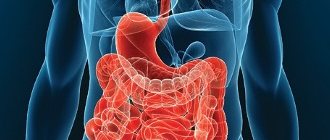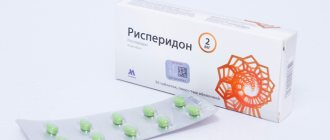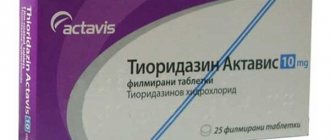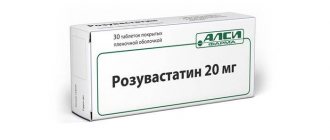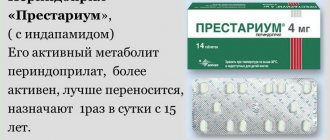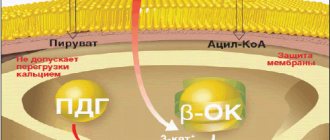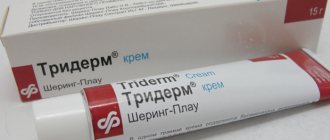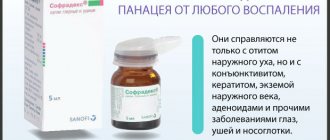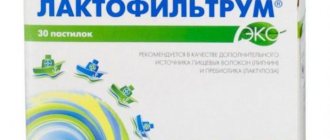Prohibited during pregnancy
Prohibited during breastfeeding
Prohibited for children
Allowed for older people
Has limitations for liver problems
Has limitations for kidney problems
Rosuvastatin is a synthetic corrector of lipid balance in the body. It is a selective inhibitor of HMG-CoA reductase, which synthesizes mevalonic acid, which is the precursor for the formation of the cholesterol molecule.
The drug acts on liver cells, suppressing the synthesis of LDL and VLDL molecules, and also activates receptors that capture low-density lipid molecules and transport them back to the liver for further catabolism. Rosuvastatin is produced in tablets with a dosage of the main component rosuvastatin of 10 and 20 mg.
Properties of Rosuvastatin
The drug is prescribed for:
- homozygous genetic hypercholesterolemia in addition to a lipid-lowering diet;
- heterozygous hypercholesterolemia and primary hypercholesterolemia type 2A according to Fredrickson;
- dyslipidemia of mixed type 2B according to Fredrickson as an addition to an anti-cholesterol diet;
- for preventive purposes of the development of systemic and cardiac pathologies.
Rosuvastatin should not be used during pregnancy, pediatrics and lactation, as well as with the following disorders in the body:
- allergy to the composition of the medicine;
- severe liver pathology;
- renal failure;
- myopathy.
Mechanism of action of statins
Rosuvastatin causes quite a lot of negative reactions. The digestive tract reacts especially actively - heartburn, nausea with vomiting, diarrhea and flatulence, as well as the musculoskeletal system - myalgia and rhabdomyolysis, arthralgia and myositis. Only a doctor can prescribe therapy with Rosuvastatin, as well as select effective analogues.
Instructions for use of Rosuvastatin
Rosuvastatin is a lipid-lowering drug of the fourth (last) generation of statins. The original was developed by the Japanese company Shionogi. Launched onto the pharmaceutical market in 2003.
The main active component of the drug is rosuvastatin calcium (calcium salt). Increases the number of liver receptors, blocks HMG-CoA reductase, an enzyme that converts fatty acids into mevalonic acid, which is a precursor of cholesterol.
During treatment, the uptake and catabolism of LDL, VLDL, and triglycerides increases, and the production of lipoproteins of these fractions by the liver decreases. Within a month, the total number of LDL, VLDL decreases, and HDL increases. Atherosclerotic plaques are reduced, the lumen of arteries, arterioles, capillaries is restored, the level of C-reactive protein decreases (detected when there is vascular inflammation).
Rosuvastatin is prescribed after conservative therapy, when diet, exercise, normalization of weight, and metabolism have not reduced the level of total cholesterol to normal.
Used to treat hypercholesterolemia of various types: familial, mixed, homozygous. Therapy is combined with a diet recommended for high cholesterol, atherosclerosis, and heart disease.
Contraindications, side effects
It is prohibited to take the drug or its substitutes in the following cases:
- allergy, hypersensitivity to rosuvastatin;
- acute diseases of the liver, kidneys (5% of the drug is excreted by the kidneys);
- pregnancy, lactation;
- simultaneous use with cyclosporine.
Statin is prescribed with caution when:
- kidney failure;
- hypothyroidism;
- personal/family history of myopathy or rhabdomyolysis;
- intolerance to other statins;
- liver pathologies;
- severe infections;
- injuries;
- operations;
- low pressure;
- severe metabolic, electrolyte or endocrine disturbances;
- patients over 65 years of age.
The first few weeks of taking rosuvastatin may be accompanied by unpleasant reactions: constipation, headache, runny nose, muscle and joint pain. After some time, the symptoms disappear. Some people's bodies do not adapt to taking a statin and their health does not improve.
Some patients experience less common side effects:
- diabetes mellitus;
- dizziness;
- nausea;
- stomach pain;
- weakness;
- muscle inflammation;
- insomnia.
Rarely, while taking the drug, the following develop: diarrhea; rhabdomyolysis; tendon weakness; excretory system infections; gynecomastia; pancreatitis; hepatitis; peripheral neuropathy.
Interaction
Tell your doctor about all medications, vitamins, and dietary supplements you are taking. Some of them can affect the concentration of rosuvastatin.
It is contraindicated to take the drug together with cyclosporine, certain combinations of drugs for HIV infection, the maximum dosage is with fibrates.
When prescribing the following drugs, their ability to change the concentration of rosuvastatin should be taken into account:
- fusidic acid;
- a nicotinic acid;
- antacids based on aluminum or magnesium;
- erythromycin;
- HIV protease inhibitors;
- antifungal drugs;
- oral contraceptives.
Known and safe analogues of Rosuvastatin
Crestor is the original rosuvastatin, a rather expensive drug. Its price ranges from 1,500 to 9,000 rubles. Depends on the dosage of the active substance, the number of tablets in the package.
There are substitutes for Rosuvastatin from various foreign and Russian pharmaceutical companies. Analogs are cheaper and also contain the same active ingredient. They differ from the original in production technology, name, quantity and ratio of excipients.
Crestor
An original drug from the pharmaceutical company ASTRAZENECA UK Limited (Great Britain).
Prescribed to patients with advanced hypercholesterolemia, a hereditary type of the disease, when the first signs appeared in childhood.
A very powerful drug. It is not advisable to take it for people who have a mild form of the disease, a slight increase in cholesterol, or a low risk of cardiovascular disease.
Crestor recently appeared on the pharmaceutical market. Therefore, if you experience any side effects, you should consult a doctor. He will adjust the dose or change the medicine.
During therapy, lipid metabolism parameters are monitored. First every 2 weeks, then every month. During long-term treatment, the achieved effect is maintained.
Clinical trial results showed that Crestor:
- reduces the risk of developing cardiovascular complications by 44%;
- 48% death from heart disease, vascular disease, stroke, heart attack;
- reduces the likelihood of fatal or non-fatal myocardial infarction by 54%.
The studies were conducted among patients with severe hypercholesterolemia and a high risk of cardiovascular disease.
Rosecard
One of the best analogues of Rosuvastatin, manufactured by Zentiva, Czech Republic.
The Sanofi group company is an international pharmaceutical company that has branches in Russia and in 50 other countries in Europe, the Middle East, and Africa. Reduces total cholesterol levels and slows down the development of atherosclerosis. Reduces the likelihood of developing cardiovascular diseases due to hypercholesterolemia. It can be prescribed as a prophylactic for elderly people, people at high risk of coronary artery disease, heart attack, and stroke.
Rosucard is contraindicated for pregnant and lactating women, children, and adolescents under 18 years of age. There are very few clinical trials of the analogue to talk about its safety for this category of patients.
During treatment with Rosucard, cases of changes in the lipid spectrum of the blood were identified: decreased platelet levels, headaches, stomach pain, nausea, constipation, increased protein in the urine.
Akorta
Manufacturer PHARMSTANDARD (Russia).
An inexpensive substitute for rosuvastatin, it has less bioavailability than the original. It takes 3-4 weeks to get maximum effect.
Prescribed for abnormally high cholesterol levels, familial, primary hyperlipidemia, myocardial revascularization (impaired blood supply to the heart due to damage to the coronary arteries). To slow down the development of atherosclerosis, restore vascular lumen, primary prevention of stroke, heart attack.
Before starting treatment, the patient must begin to follow a standard cholesterol-lowering diet and maintain proper nutrition during therapy. The dosage is selected by the doctor, taking into account the biochemical parameters of the blood and the goal.
Lipoprime
Made in India, LIFE SELL company.
Treatment of mixed, familial hypercholesterolemia, as well as homozygous hyperlipidemia as an addition to conservative therapy.
Take orally regardless of food. The initial dosage is 5 mg. If necessary, the dose is increased every 2 weeks to the maximum.
Side effects that often appear include:
- nervous system: headaches, loss of coordination, sleep, anxiety, rarely depression (in persons with an unstable psycho-emotional state);
- digestive organs: stool disturbance, nausea;
- respiratory system: pharyngitis (inflammation of the pharyngeal mucosa);
- muscle pain, muscle hypertonicity.
It is not advisable to take rosuvastatin and gemfibrozil at the same time. There is evidence of an increase in cases of myositis (inflammatory damage to skeletal muscles) and neuromuscular diseases.
Mertenil
Manufacturer Gedeon Richter (Hungary).
Indicated against hyperlipidemia, fat metabolism disorders. Mertenil is prescribed when conservative therapy has not brought the expected results.
It is forbidden to take the analogue in case of acute diseases of the kidneys, liver, during pregnancy or breastfeeding. Use with caution, only as prescribed by a doctor, in children and adolescents under 18 years of age.
The drug is well tolerated. Adverse reactions rarely occur: stool disturbances, headaches, stomach pains, allergies.
Reddistatin
Manufactured by the pharmaceutical company DR. REDDY`S Laboratories, (India).
Prescribed to normalize total cholesterol levels and lipid metabolism. Effective for familial, mixed hypercholesterolemia.
Contraindicated during pregnancy and breastfeeding. Prescribe with caution to women of reproductive age who do not use reliable contraception.
It is also forbidden to take pills if there are severe kidney problems.
Ro-statin
Manufacturer: Russian pharmaceutical company Atoll.
Lipid-lowering drug, a complete analogue of Rosuvastatin, in capsules. Contents: microgranular powder of white or white-yellow color.
It has a strong lipid-lowering effect, restores blood vessels, improves blood biochemical parameters. It has antioxidant, anti-proliferative (prevents the proliferation of tumor or pre-tumor cells) properties.
Do not take simultaneously with cyclosporine.
Rosart
Made in Iceland, Actavis Ltd.
Retains all the properties of the original Rosuvastatin. Well tolerated. Very rarely, headaches, stool and digestion disorders may occur.
Indicated for use:
- hypertriglyceridemia;
- advanced atherosclerosis;
- high risk of developing cardiovascular diseases due to high cholesterol;
- hypercholesterolemia of any type.
Complex therapy with rosuvastatin and fenofibrate to reduce triglyceride concentrations leads to a mutually enhanced effect.
Roseystar
It is supplied to the pharmaceutical market by BELUPO (Croatia).
The main purpose is the treatment of hereditary forms of hyperlipidemia, the primary prevention of cardiovascular complications (heart attack, stroke, coronary artery disease).
Well tolerated by older people; no dose adjustment is required.
Rosistark is not prescribed to children under 12 years of age. Use with caution in adolescents under 18 years of age due to insufficient data on the effectiveness and safety of the drug.
Adverse reactions may include dysfunction of the digestive tract, headaches, and nausea. Very rarely, in their reviews, patients complained of muscle pain.
Rosuvastatin-SZ
Manufacturer: North Star, Russia.
An inexpensive analogue of Rosuvastatin, which retains all the properties of the original. It lowers cholesterol well and is suitable for the treatment of hyperlipidemia of any type and advanced atherosclerosis.
Effective for the primary prevention of vascular and heart diseases. If there is a high risk of heart attack, stroke, or ischemic heart disease, the maximum dosage of the analogue is prescribed - 40 mg. Treatment is carried out under the supervision of a doctor.
The drug can be prescribed to patients with mild or moderate renal failure. The initial dose is 5 mg, increased gradually every 2-4 weeks.
The medicine is easily absorbed and well tolerated. Age does not affect pharmacokinetics. For older people, no dose adjustment is required.
Side effects when taking Rosuvastatin-SZ appear very rarely and are insignificantly expressed. They go away on their own and do not require specific treatment.
Roxera
Manufactured by KRKA (Slovenia).
An analogue of the drug Rosuvastatin, used in the treatment of various types of hypercholesterolemia.
Not prescribed for pregnant, lactating women, persons suffering from severe functional disorders of the kidneys and liver. Use in children over 12 years of age is allowed when the potential benefit outweighs the risk.
During therapy, minor side effects may appear: headaches, muscle pain, nausea, stool upset. Symptoms go away on their own, but they must be reported to your doctor.
Rosuvastatin vial
Russian substitute, produced by Vial LLC.
The drug reduces total cholesterol levels by reducing the concentration of LDL. The effect is dose dependent. The first result appears 7 days after the start of treatment, the maximum after 2-3 weeks.
For familial homozygous hyperlipidemia, it is prescribed as an addition to diet and exercise. Rosuvastatin Vial is well tolerated. Very rarely, patients complained of headaches and stool disturbances.
Prescribe with caution to persons with high risk factors for the development of rhabdomyolysis, hypothyroidism, and renal failure. Therapy is carried out under the supervision of a doctor. If creatine phosphokinase levels increase significantly, discontinue use. A substitute medicine is prescribed by a doctor, taking into account the patient’s condition.
Rozulip
Manufacturer: EGIS Pharmaceuticals (Hungary).
Reduces high cholesterol, increases HDL. Effective as a prophylactic against cardiovascular diseases and atherosclerosis.
Before treatment, the patient is prescribed a standard hypocholesterol diet and a set of physical exercises. You need to adhere to proper nutrition throughout the entire therapy. The dosage is selected only by the doctor after receiving the test results.
Rozulin is well tolerated. Elderly people do not need to reduce the dose. The analogue may be taken by persons with mild or moderate renal failure.
Suwardio
Manufacturer SANDOZ (Slovenia).
An analogue of Rosuvastatin, price from 200 rubles, is not inferior to the original in terms of therapeutic effect.
The main indication is familial, mixed hyperlipidemia, a high risk of heart disease due to high cholesterol. Can be prescribed as secondary prevention after a heart attack or stroke.
Two clinical trials were conducted. The group consisted of children and adolescents 6-17 years old suffering from heterozygous familial hyperlipidemia. A total of 214 people participated. The research lasted for 2 years.
The results showed that taking the analogue did not affect body weight, height, or puberty. However, the group size was not sufficient to detect rare adverse reactions. Therefore, we cannot talk about the complete safety of the analogue for children and adolescents. A doctor can prescribe Suwardio after assessing the risks and possible benefits.
Tevastor
Manufacturer: pharmaceutical company Teva (Israel).
Reduces high cholesterol and is used for various types of dyslipidemia. Prescribed as a drug that slows atherosclerosis, with a high risk of cardiovascular complications.
Well tolerated, adverse reactions occur rarely. They go away on their own, no specific treatment is required.
The dosage is prescribed after examination and the results of a biochemical blood test. Reception is started with a minimum dose, increased every two weeks under the supervision of a doctor.
Rosuvastatin and its analogues are taken for a long time. When the result is achieved, the dosage is reduced, biochemical blood tests are done, and observations are made. If cholesterol begins to rise, statins are prescribed for life.
Pharmacokinetics
Absorption and distribution
The maximum concentration of rosuvastatin in blood plasma is achieved approximately 5 hours after oral administration. Absolute bioavailability is approximately 20%. Rosuvastatin is metabolized primarily by the liver, which is the main site of cholesterol synthesis and LDL-C metabolism. The volume of distribution of rosuvastatin is approximately 134 L. Approximately 90% of rosuvastatin is bound to plasma proteins, mainly albumin.
Metabolism
Subject to limited metabolism (about 10%). Rosuvastatin is a non-core substrate for metabolism by enzymes of the cytochrome P450 system. The main isoenzyme involved in the metabolism of rosuvastatin is the CYP2C9 isoenzyme. The isoenzymes CYP2C19, CYP3A4 and CYP2D6 are involved in metabolism to a lesser extent. The main identified metabolites of rosuvastatin are N-desmethylrosuvastatin and lactone metabolites. N-desmethyl rosuvastatin is approximately 50% less active than rosuvastatin; the lactone metabolites are pharmacologically inactive. More than 90% of the pharmacological activity of inhibiting circulating HMG-CoA reductase is provided by rosuvastatin, the rest is provided by its metabolites.
Removal
About 90% of the dose of rosuvastatin is excreted unchanged through the intestine (including absorbed and unabsorbed rosuvastatin). The remaining part is excreted by the kidneys. The plasma half-life (T1/2) is approximately 19 hours. The half-life does not change with increasing dosage of the drug. The geometric mean plasma clearance is approximately 50 L/h (coefficient of variation 21.7%). As with other HMG-CoA reductase inhibitors, the process of “hepatic” uptake of rosuvastatin involves a membrane cholesterol transporter, which plays an important role in the hepatic elimination of rosuvastatin.
Linearity
Systemic exposure of rosuvastatin increases in proportion to the dose. Pharmacokinetic parameters do not change with daily use. Special populations of patients.
Age and gender
Gender and age do not have a clinically significant effect on the pharmacokinetics of rosuvastatin.
Ethnic groups
Pharmacokinetic studies have shown an approximately twofold increase in the median AUC (area under the concentration-time curve) and Cmax (maximum plasma concentration) of rosuvastatin in patients of the Mongoloid race (Japanese, Chinese, Filipinos, Vietnamese and Koreans) compared with Caucasians; Indians showed an increase in median AUC and Cmax by 1.3 times. Pharmacokinetic analysis did not reveal clinically significant differences in pharmacokinetics between Caucasians and representatives of the Negroid race.
Kidney failure
In patients with mild to moderate renal failure, the plasma concentration of rosuvastatin or N-desmethylrose-vastatin does not change significantly. In patients with severe renal failure (creatinine clearance (CC) less than 30 ml/min.), the concentration of rosuvastatin in the blood plasma is 3 times higher, and the concentration of N-desmethylrosuvastatin is 9 times higher than in healthy volunteers. Plasma concentrations of rosuvastatin in hemodialysis patients were approximately 50% higher than in healthy volunteers.
Liver failure
In patients with various stages of liver failure, there was no increase in the half-life of rosuvastatin in patients with a Child-Pugh score of 7 or lower. In two patients with Child-Pugh scores of 8 and 9, an increase in the half-life of at least 2 times was noted. There is no experience with the use of rosuvastatin in patients with a Child-Pugh score of more than 9.
Price comparison table
The table shows the average price of drugs in Russia.
| Drug name | Dosage/Number of tablets per package | price, rub. |
| Crestor | 5, 10, 20, 40 mg: 28, 98, 126 pcs. | 1300-4900 |
| Akorta | 10, 20 mg: 10, 20, 30 pcs. | 310-750 |
| Lipoprime | 5, 10, 20 mg: 30 pcs. | 270-406 |
| Mertenil | 5, 10, 20, 40 mg: 30, 60, 90 pcs. | 300-2200 |
| Reddistatin | 5, 10, 20, 40 mg: 28 or 30 pcs. | 320-1050 |
| Ro-statin | 5, 10, 20, 40 mg: 5, 6, 7, 10, 60, 70, 80, 90 pcs. | 300-1500 |
| Rosart | 5, 10, 20, 40 mg: 28, 30, 84, 90 pcs. | 200-2000 |
| Roseystar | 10, 20, 40 mg: 14, 28, 30, 56 pcs. | 220-1900 |
| Rosuvastatin-SZ | 5, 10, 20, 40 mg: 20, 28, 30, 60, 90 pcs. | 150-1300 |
| Rosuvastatin vial | 10, 20 mg: 30, 40, 60 pcs. | 300-600 |
| Roxera | 5, 10, 15, 20 mg: 30 or 90 pcs. | 350-2100 |
| Rosecard | 10, 20, 40 mg: 30, 60, 90 pcs. | 500-2300 |
| Rozulip | 5, 10, 20, 40 mg: 14, 28, 56 pcs. | 240-1800 |
| Suwardio | 5, 10, 20, 40 mg: 28 pcs. | 220-1000 |
| Tevastor | 5, 10, 20, 40 mg: 30 or 90 pcs. | 300-2400 |
All statins are prescription drugs. You can buy them in retail pharmacies or online.
Basic instructions
Rosuvastatin (analogues and substitutes may have a higher cost) is taken only orally according to the dosage prescribed by a specialist and according to a certain scheme. The dosage and duration of therapy is determined individually depending on the patient’s condition and the presence of concomitant abnormalities.
Usually the drug is taken orally once a day. The dosage can be 10, 20 or 40 mg per day. It is determined individually for each patient. The duration of therapy is determined depending on the level of cholesterol in the blood. Typically, experts recommend taking the product for a long time for 2-6 weeks.
The time of day for taking the drug does not matter. Each patient independently chooses the most convenient time to take the pill. It is important to drink the product with plenty of water, but do not chew the tablet or crush it in other ways. Dissolution of the membrane must occur in the small intestine.
Sometimes a different scheme is used during therapy. For the first few days, patients take 10 mg of the drug. If there is no therapeutic effect, the dose is increased to 20 mg per day.
The patient takes the drug at this dose for 2 weeks. If it is necessary to obtain a more pronounced effect, it is possible to increase the dosage to 40 mg per day. But the decision in this case is made by the doctor based on diagnostic data.
Answers to popular questions
What is the difference between Livazo and Rosuvastatin
Livazo is a latest generation statin, the active substance is pitavastatin. It is considered a powerful lipid-lowering agent. However, the drug appeared on the pharmaceutical market recently, and there is little data on side effects. There are no analogues of the drug.
Pitavastatin may be recommended in case of intolerance to Rosuvastatin, when the patient needs to take potent lipid-lowering drugs.
Analogues containing rosuvastatin should not be taken independently. These are powerful drugs that help cope with high cholesterol and reduce the risk of dangerous complications. They have many side effects and contraindications. They can only be taken as prescribed by a doctor, who will monitor them during the entire course of therapy.
Which rosuvastatin analogue should I choose?
The most reliable drug is the original rosuvastatin Crestor. It is the most researched, has a long history of use, but is very expensive. If your budget is limited, you can pay attention to analogues of the drug that are produced by reputable companies: Mertenil, Rosucard, Roxera. They reduce cholesterol levels no worse than Crestor. The main drawback is that there are no large-scale studies focusing specifically on these statins.
Is it true that Coenzyme 10 helps prevent muscle pain caused by taking rosuvastatin?
All statins have been found to have the ability to bind coenzyme 10, which is needed by muscle cells to produce energy. This could be the cause of muscle pain, weakness, and spasms that many patients suffer from. Doctors suggested that taking a dietary supplement would help eliminate the side effects of the medication. The research results were controversial. Some confirmed the theory, others refuted it.
Doctors have come to the conclusion that since taking coenzyme-10 is very rarely complicated by adverse reactions, it can be recommended for patients who suffer from muscle pain. Perhaps there will be no benefit from taking it, as well as harm.
Which is better: rosuvastatin or atorvastatin?
Rosuvastatin is 1.5-2 times more effective in reducing cholesterol levels than atorvastatin, but has some serious side effects. Therefore, when choosing a statin, the doctor is guided by the general health of the patient. In addition, rosuvastatin is an expensive drug that must be taken for life. If you're on a budget, atorvastatin is a good choice. Not as powerful, but more moderately priced.
Why should patients who do not have symptoms of coronary heart disease take rosuvastatin?
It has been suggested that rosuvastatin can be used for both the treatment and prevention of cardiovascular complications of atherosclerosis. It was tested using the large-scale JUPITER study, which included 17,802 patients.
Rosuvastatin reduced the overall risk of developing cardiovascular complications of atherosclerosis by 44%. In particular, it helped reduce the incidence of myocardial infarction by 54%, stroke by 48%, and overall mortality by 20%.
Is it possible to replace rosuvastatin with a non-statin?
Statins are the most effective drugs for lowering cholesterol. However, there are other groups of lipid-lowering drugs: fibrates, cholesterol absorption inhibitors, nicotinic acid, bile acid sequestrants. You can talk to your doctor about the replacement that is right for you.
Doctors' opinion about rosuvastatin
Rosuvastatin is a powerful drug that allows doctors to return people to normal life who have not been helped by weaker statins. It is also prescribed as an “emergency” medicine when it is necessary to significantly reduce cholesterol levels. The patient is then switched to a weaker statin. Rosuvastatin is convenient for doctors in a large number of combinations with other drugs. This allows it to be prescribed to patients for whom other statins are contraindicated.
There is an opinion among doctors that rosuvastatin must be prescribed carefully, since its effect has been studied less effectively than atorvastatin, and there is less experience with its use. In fact, 15 years have passed since the drug went on sale. During this time, several global studies were carried out, and considerable practical experience in using the medicine was accumulated.
The drug "Crestor"
This medicine is produced by well-known pharmaceutical companies and is more expensive than Rosuvastatin. However, many patients consider it to be a better remedy. "Crestor" is produced in the same form as "Rosuvastatin" - in the form of tablets packaged in blisters (most often 7 pieces).
In addition to hypercholesterolemia, this analogue can be prescribed:
- for the treatment of atherosclerosis during lipid-lowering treatment;
- as an addition to a diet designed for weight loss.
Doctors prescribe this medicine to patients initially in an amount of 5 or 10 mg. In the future, its dose, like Rosuvastatin, can be increased.
